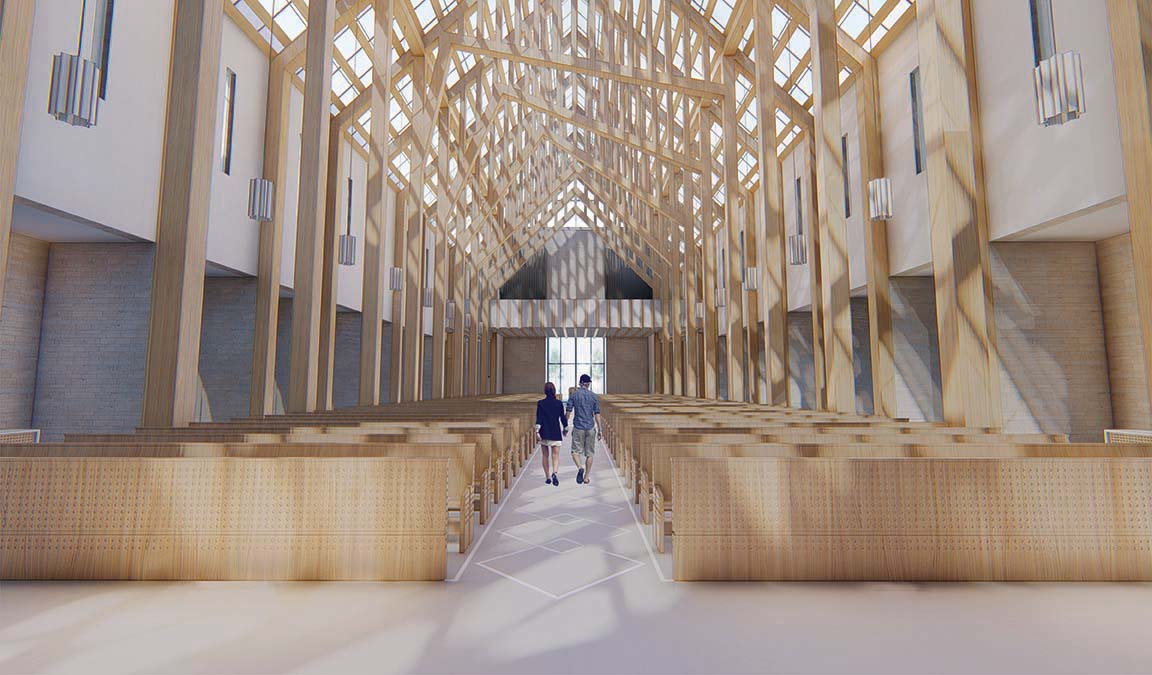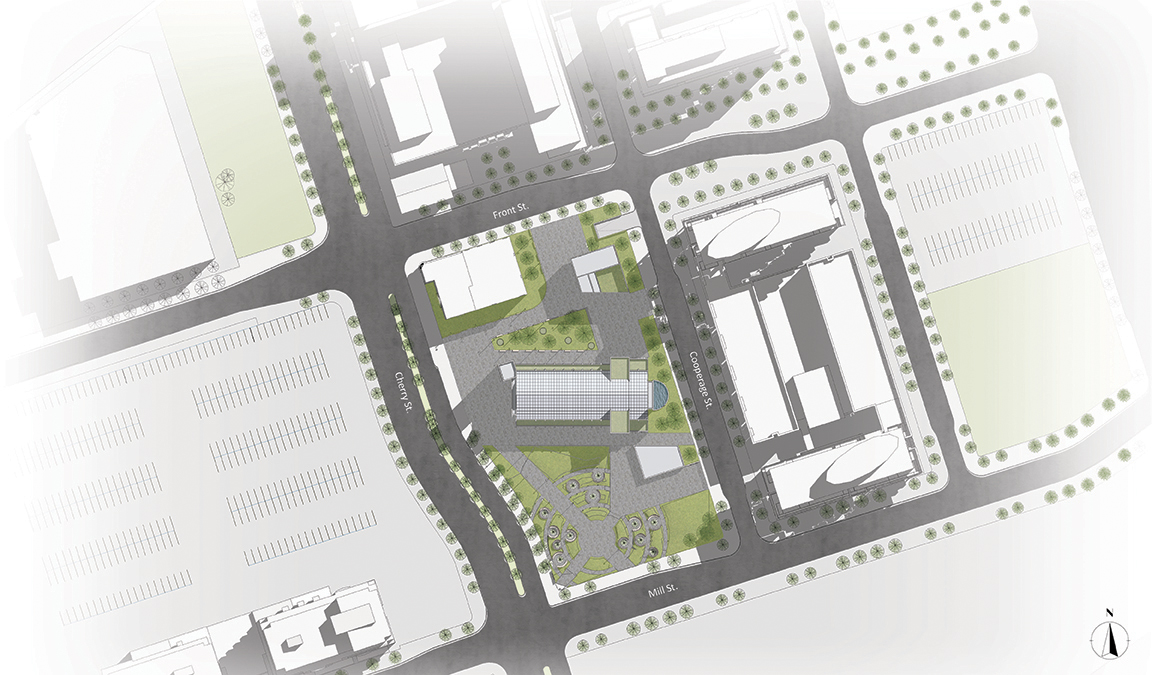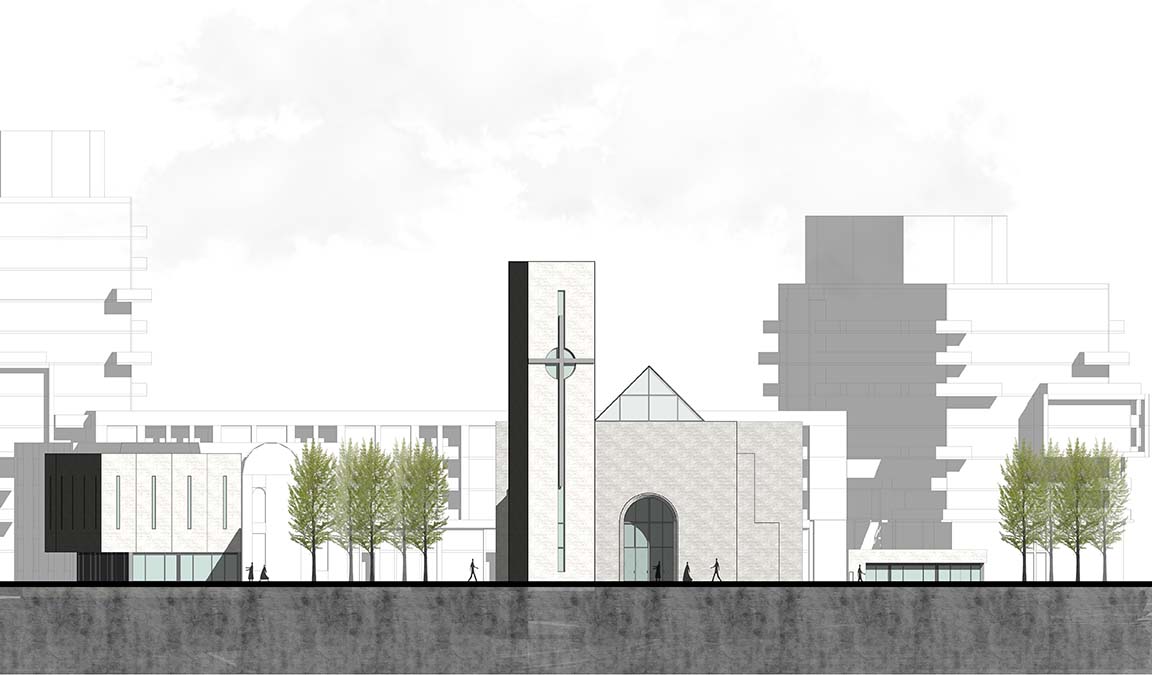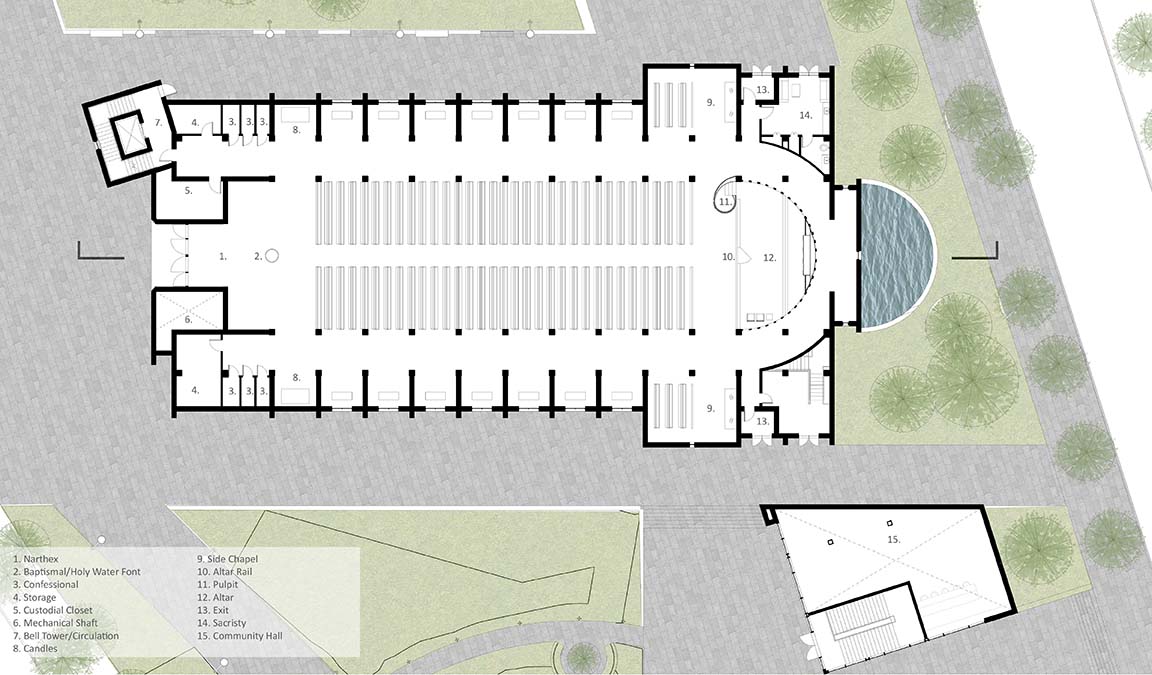YEAR 3 & 4
Jeanette Wehbeh—IBI Group Architects Award
![]()
Jeanette Wehbeh—IBI Group Architects Award

About the Award
For a student who demonstrated excellence in the fourth-year Architecture Option Studio.
In collaboration with Rutuja Atre
The intent of this project was to create a sacred place of worship based on the traditional Christian latin mass. Completed collaboratively with Rutuja Atre for the fourth year Architecture option studio, our design was based on the concept and story of the Transfiguration. The Transfiguration is a story told in which Jesus is transfigured and becomes radiant in glory upon a mountain. In these accounts, Jesus and three of his apostles, Peter, James, and John, go to a mountain to pray and while atop the mountain Jesus begins to shine with bright rays of light. The Transfiguration was a special event in which God allowed certain apostles to have a privileged spiritual experience that was meant to strengthen their faith for the challenges they would later endure. But it was only a temporary event; it was not meant to be permanent. In the same way, at certain times in this life, God may give certain members of the faithful, special experiences of his grace that strengthen their faith. The momentary glimpses of the joy of heaven are meant to sustain the faithful as they face the challenges of this life, to help strengthen them on the road that will ultimately bring them into the infinite and endless joy of heaven.
The word “transfiguration” comes from the Latin roots trans- “across” and figura “form, shape”. It thus signifies a change of form or appearance. This element dictates the design of the Church of Transfiguration and helps in creating an interior atmosphere that gives the user a temporary glimpse of heaven. The massing is a heavier earth-bound form clad in stone encasing the lighter heaven-reaching form within it manifested through a Kalwall system application. The wooden truss structure reaches towards heaven and rotates in ad-quadratic proportions. The glazing casts shadows in rhythmic patterns. The ever-shifting nature of the space provides a unique experience every time someone visits, whether it’s bright or dark, raining or snowing. This quality is what will compel users to visit again and again. The temporality of the atmosphere speaks to the transfiguration of Jesus, as witnessed by the apostles in order to give hope and strengthen the people’s faith in the religion.
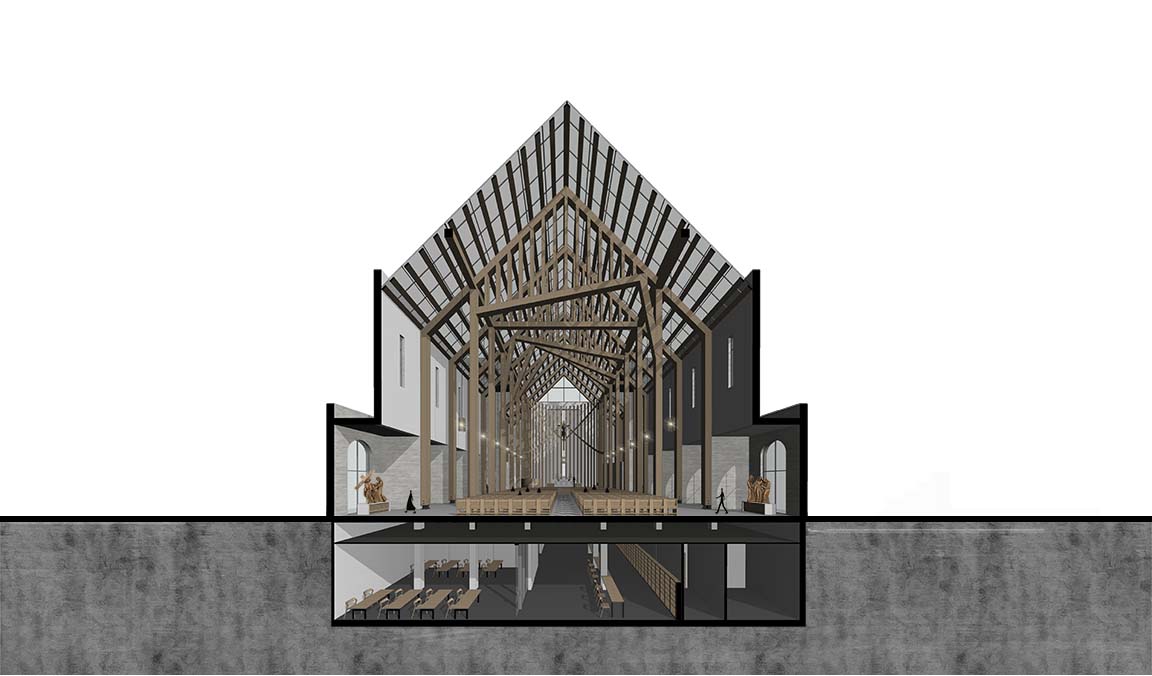
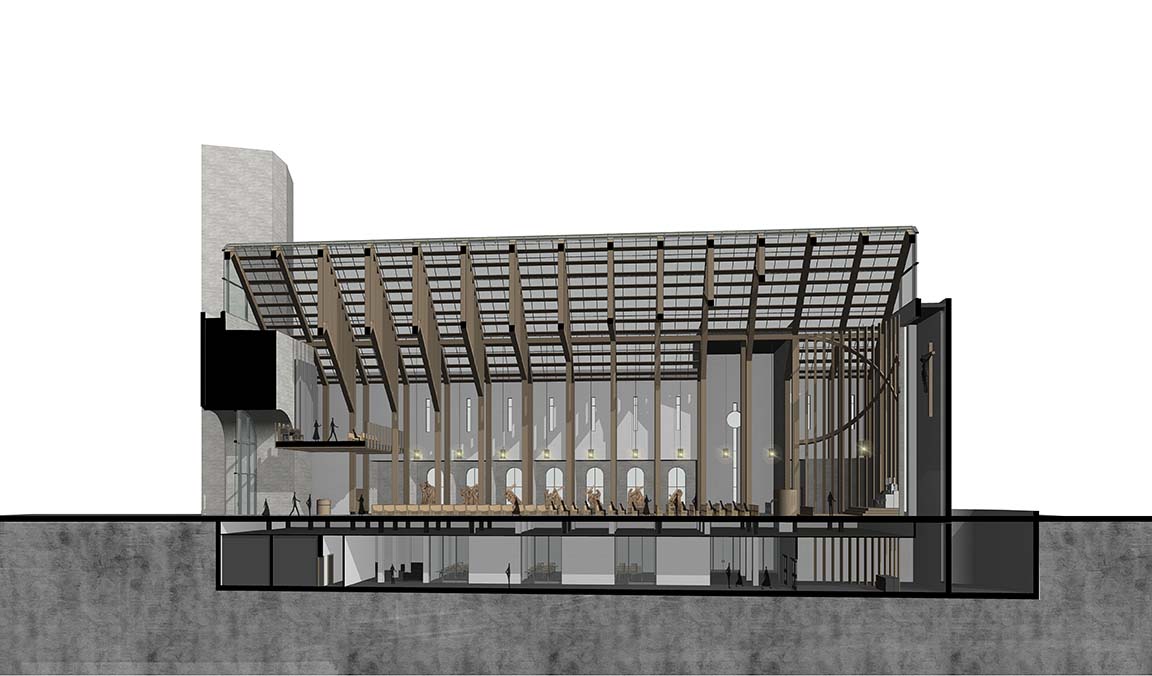


The ever-shifting
nature of the space provides a unique experience every time someone visits,
whether it’s bright or dark, raining or snowing.
nature of the space provides a unique experience every time someone visits,
whether it’s bright or dark, raining or snowing.

